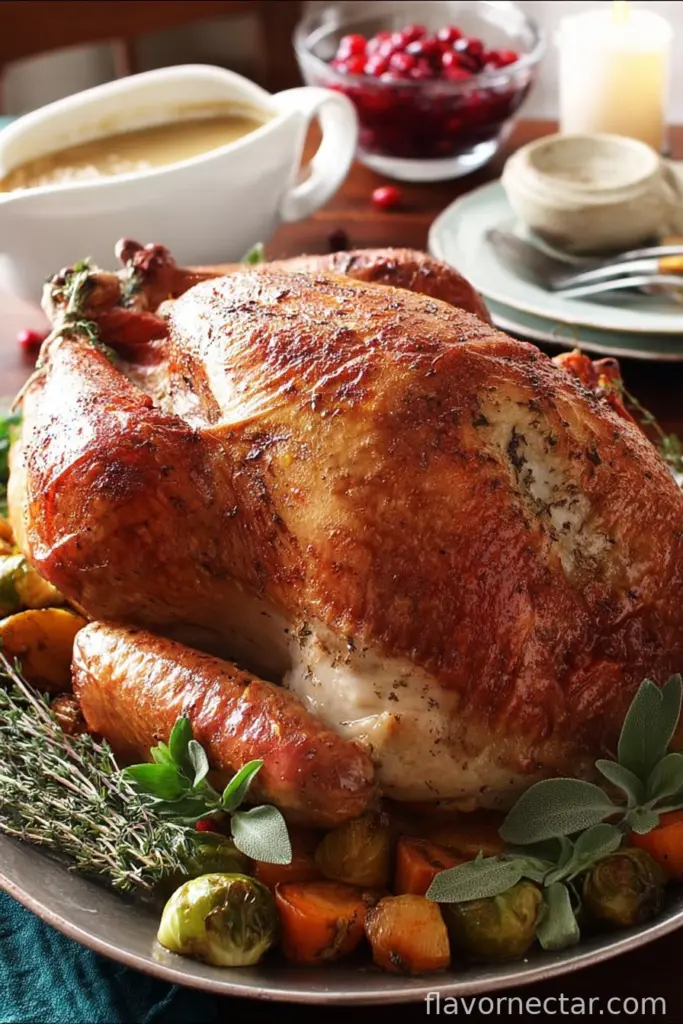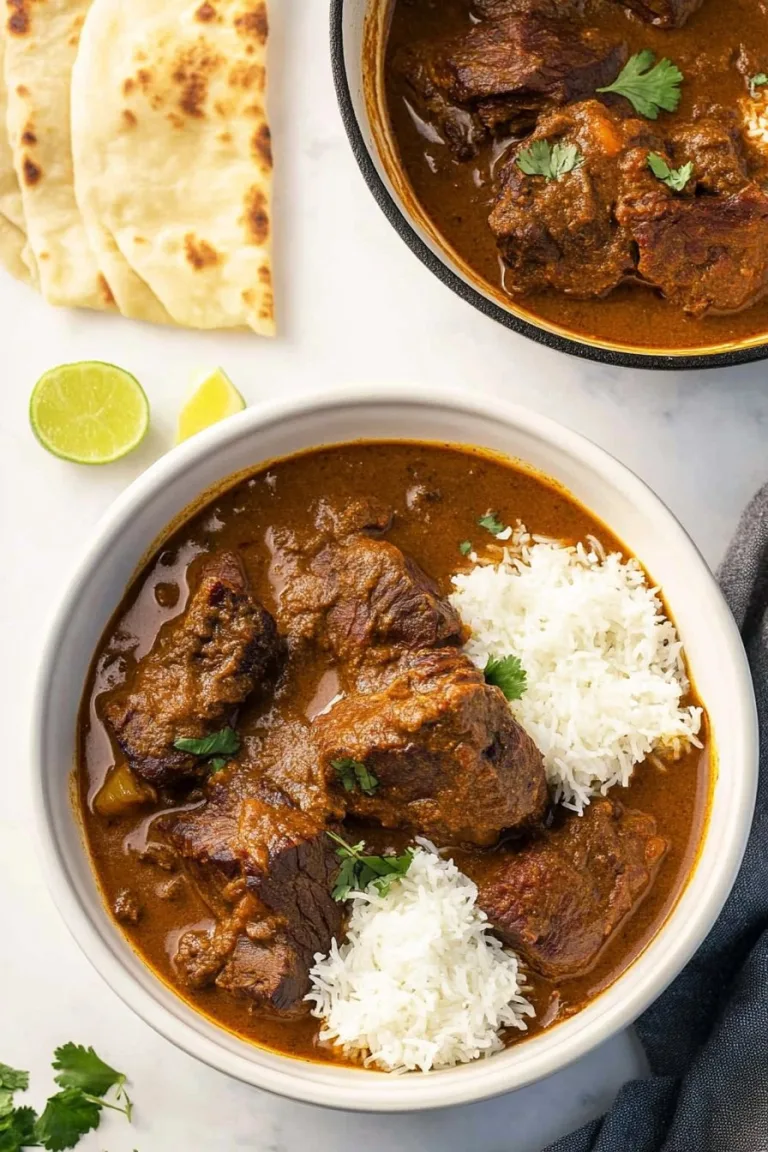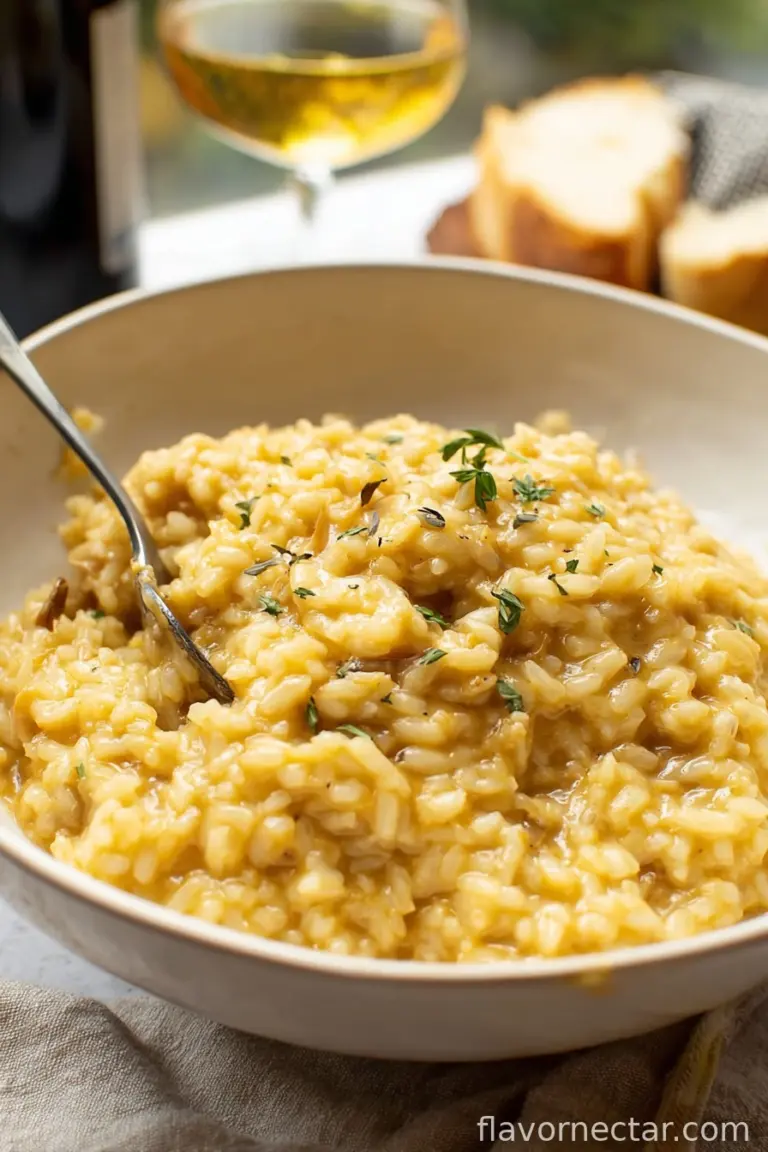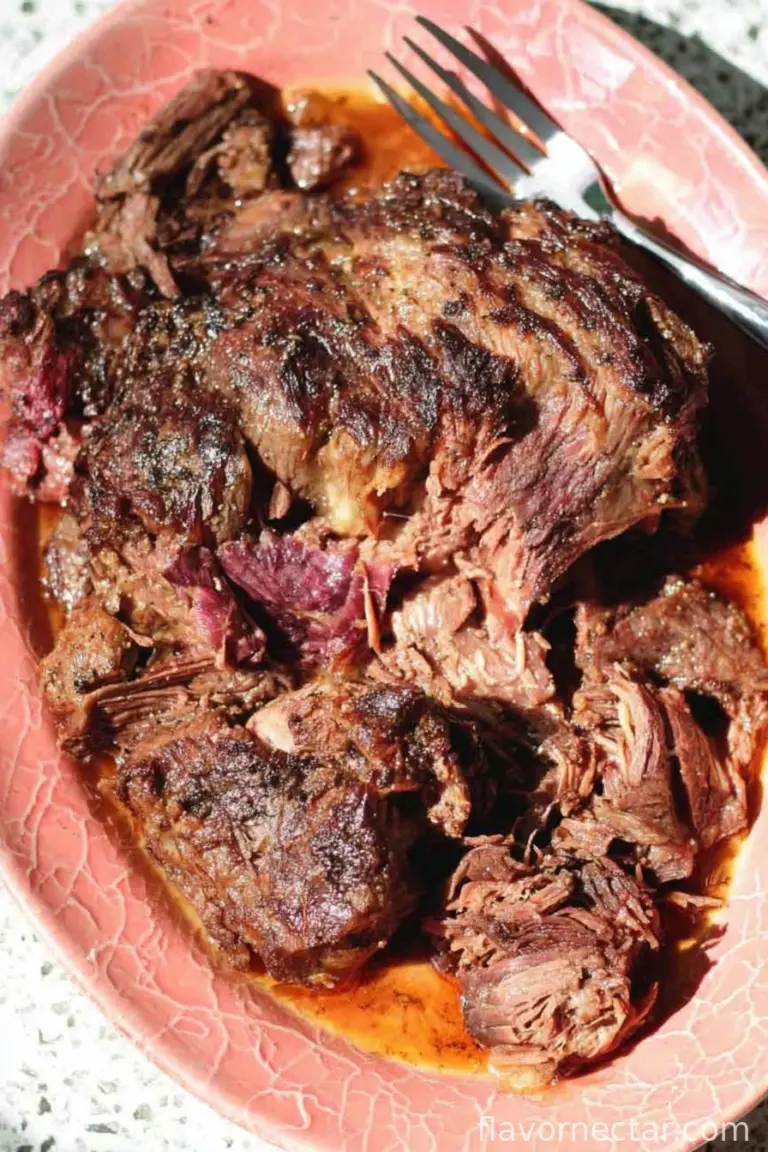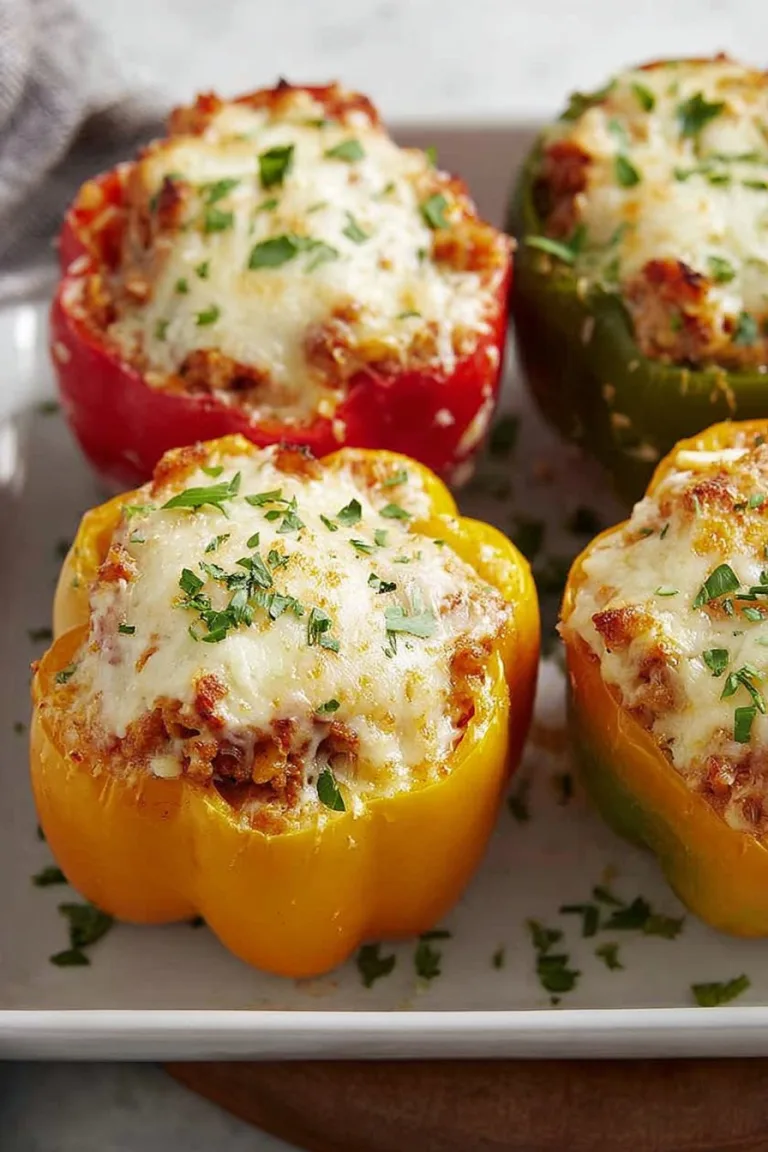Catching Up Over Sage Turkey
Okay, so let me set the scene: my kitchen, the night before Thanksgiving—me listening to questionable 80s love songs and wrestling an honestly-too-big-for-my-oven turkey. I used to think roasting turkey was for culinary superheroes (or at least, folks with double ovens). Turns out, you really just need some sage, a bit of faith, and the willingness to get your hands a little goopy. My mum claims I once dropped the turkey on the floor, but I only almost did. Anyway, that’s how this roasted sage turkey with vegetable gravy earned its place as my annual badge of honor (and comic disaster).
Why You’ll Love This Turkey (& Gravy)
I make this cozy roast when I’m after something a bit more lively than the plain-old turkey and the kids are tired of “boring brown gravy.” Honestly, my family just goes mad for the veggie gravy—sometimes spooning it onto everything on the plate (I’m not naming names, but it’s my brother Mike). And I like that it makes the whole house smell like a hug from an herb garden. Once I tried doing it all in one pan—still don’t know where those carrots disappeared to… turns out, two trays are actually helpful.
What You’ll Need (Plus a Few Swaps)
- 1 turkey (about 10–12 lbs or whatever fits in your oven—don’t overthink it)
- 2 big handfuls fresh sage leaves (or… dry sage if you’ve run out, but use half the amount—they can get bossy flavor-wise)
- 2 onions, quartered (I sometimes sub in leeks if there’s one languishing in the fridge)
- 3-4 carrots, roughly chopped (but I’ll use parsnips if I have them—grandma swore by them, and she had opinions)
- 2-3 ribs celery, chopped
- 1 lemon, halved (or lime if you’re feeling wild—I did once, it was fine)
- 5 cloves garlic, smashed (pre-minced stuff is fine too, on a lazy weeknight)
- Olive oil or melted butter (I like half and half, but you do you)
- Salt and pepper (not fussy—just sprinkle generously)
- Optional: a splash of white wine or apple cider (if you have some around, it adds a nice little zing)
- 3 cups chicken or veggie broth (I use low sodium boxed stuff, no shame, though homemade is obviously delightful)
- 2 heaping tablespoons flour (or use cornstarch if you’re gluten-free—works, but gives the gravy a slightly different vibe)
How I Usually Make It (Winging It, But With Love)
- Preheat your oven to 350°F (175°C). Get your biggest roasting pan ready. If you don’t have one, a sturdy baking dish works—just, you know, throw a layer of veggies underneath so things won’t stick too badly. (Learn from my greasy mistakes.)
- Prep the Turkey: Take the turkey out and dry it off—a roll of kitchen towel is your pal here. Rub it all over (inside and out) with olive oil and sprinkle with salt and pepper. Stuff the cavity with half the sage, the lemon halves, and a couple onion quarters. I sometimes toss a bit of carrot in there too (no idea if it actually helps, but it looks fancy).
- Scatter the Veg: Arrange the rest of the onions, carrots, and celery in the pan; drape the rest of the sage over. Maybe drizzle more oil or dot with butter if you’re feeling spirited. I’ve also splashed a bit of wine in here when I want to feel like Julia Child.
- Roast Away! Figure on around 13–15 minutes per pound (so about 2.5–3 hours for a 12-pounder). About halfway through, I throw a bit of foil over it if it’s browning too quickly (this is when I hover and snack on the veg—chef perks, right?).
- Check temp: Jab a thermometer into the thickest part of the thigh; should be 165°F (74°C). No thermometer? Poke with a knife; juices should run clear—my aunt swears by this method.
- Rest: Once done, let the turkey hang out on the counter under foil for at least 25–30 minutes. Don’t rush this, even if the hangry crowd (or you) protest. The juices need time to ponder their choices and soak back in.
- Make the Gravy: Fish out most of the veg and set aside (some folks mash these into the gravy, but I prefer them as a side). Pour off some fat (not all!), sprinkle the flour (or cornstarch slurry) into the pan juices, and whisk over a burner until bubbly. Splash in the broth, whisk like you’re owed money, and simmer till thick. I taste here—sometimes I add a bit more sage or a spoon of mustard. Don’t stress if it looks strange; it always pulls together in the end.
Notes From My Messy Kitchen
- I tried skipping the resting step once. Big mistake—the turkey sulked and spilled its juicy secrets everywhere (aka, it was dry).
- The overnight turkey-in-brine method probably works, but honestly, I just never have the fridge space—plus this recipe turns out juicy regardless.
- If you forget to defrost the bird, use the cold water method. I’ve been rescued by it more than once!
Variations I’ve Fiddled With
- Swapped fresh rosemary for half the sage—turned out woodland-y, but not in a bad way.
- Once tried a maple glaze; a bit too sweet for my lot, but if you like that vibe, drizzle at the end.
- Tried roasting with root veg like turnips… honestly, it turned into a mystery casserole (not my finest hour).
Equipment (You Can Improvise!)
- Roasting pan or big ovenproof dish (I’ve used a lasagna tray in a pinch—works like a charm)
- Meat thermometer (But seriously, don’t fret if you haven’t got one—poke with a skewer and trust your gut)
- Good sharp knife for carving (Just watch your fingers, unlike me last Christmas when I, uh, learned a lesson!)
- Whisk (or a fork in desperate situations—pro tip: it’s slower but gets the job done)
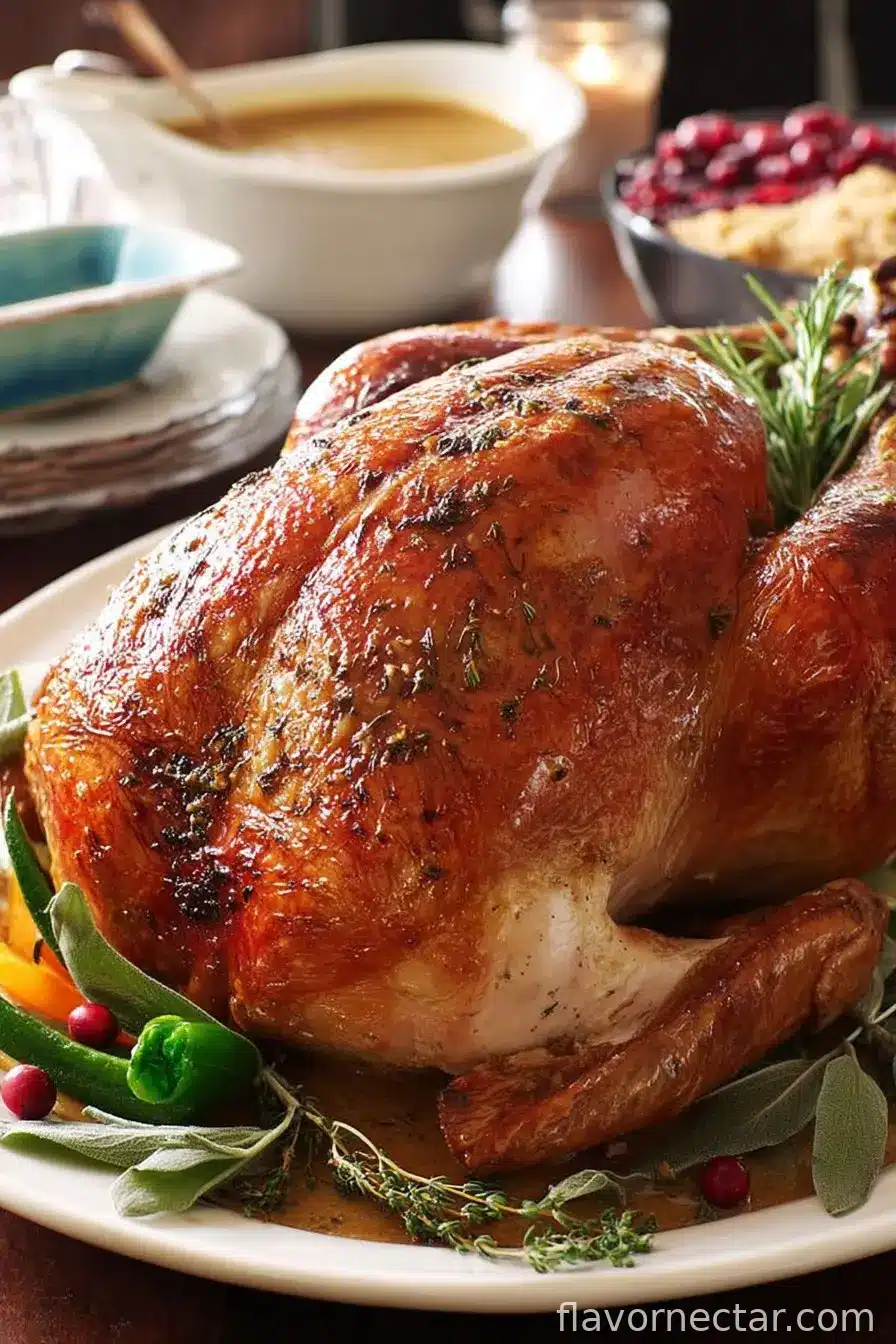
How To Store It (If There’s Any Left)
If, by some miracle, there’s leftover turkey, I keep slices and gravy in separate containers in the fridge. They’re good for 2-3 days. But honestly—even the dog stares at the fridge hoping for scraps, so it never seems to last more than a day at my place.
How I Like To Serve It
We usually plop the turkey on a large platter, tuck crispy roast potatoes and braised greens around it, and spoon veggie gravy into an old gravy boat (with a chip in it—family heirloom, ha!). And someone—every time—steals the wing before we even sit down. Oh, and we always sneak cold slices late at night; best with tart cranberry sauce, in my (strong) opinion.
A Few Lessons Learned (AKA My Pro Tips)
- Don’t skip the resting—one year I rushed it, and the turkey was as dry as a British sense of humor.
- Use enough salt. Every year I think I’ve salted generously; every year, I realize I could’ve done more. Just go for it.
- If you forget to check the oven halfway through, don’t panic; just tent with foil and keep on going. Nearly burned mine once and it was still devoured.
Turkey Troubles: Your Legit Questions
- Can I use dried sage if I can’t find fresh?
- Yep! I actually do it half the time during winter. Just use about a third as much dried, because it’s stronger and can be kind of single-minded in flavor. Fresh is brighter, but honestly, no judgment here.
- How do I stop the turkey from drying out?
- Rest it, keep it covered, and don’t overcook. I once trusted my instincts instead of my thermometer—not recommended. And basting helps, but it’s not compulsory.
- Can you really make the gravy with just vegetables?
- Sure can. It’s the veg, the pan juices, a bit of flour, and some faithful whisking. If it’s looking pale, sometimes I sneak in a splash of soy sauce for color (shh, don’t tell the purists).
- What type of broth is best?
- I lean toward low-sodium chicken or veggie broth (whatever’s open in the fridge, really). Homemade is lush but not mandatory. Got stock cubes? That’ll do in a pinch—just dissolve ’em well.
- Can this be made ahead?
- Partially, yup. I like to prep the veg and rub the turkey with sage and oil the night before. But roast day-of, for sure—the smell waking everyone up is half the charm.
And if you made it all the way down here, be sure to check out this turkey carving walk-through—because, honestly, I always have to Google it every year. Happy roasting, mate!
Ingredients
- 1 whole turkey (about 12 lbs), thawed
- 3 tablespoons olive oil
- 2 tablespoons fresh sage leaves, chopped
- 1 tablespoon fresh thyme leaves
- 2 teaspoons kosher salt
- 1 teaspoon ground black pepper
- 2 carrots, chopped
- 2 celery stalks, chopped
- 1 large onion, quartered
- 4 cups low-sodium chicken broth
Instructions
-
1Preheat the oven to 325°F (163°C). Pat the turkey dry with paper towels and place it on a rack in a large roasting pan.
-
2In a small bowl, combine olive oil, sage, thyme, salt, and pepper. Rub the mixture over the entire turkey, including under the skin.
-
3Arrange carrots, celery, and onion in the bottom of the roasting pan. Place the turkey on top of the vegetables.
-
4Pour 2 cups of chicken broth into the pan. Roast the turkey uncovered for about 3 hours, basting occasionally and adding additional broth as needed.
-
5When the turkey reaches an internal temperature of 165°F (74°C), remove from oven and let rest 20 minutes. Transfer turkey to a platter.
-
6For the gravy, strain pan juices and vegetables into a saucepan, pressing vegetables to extract flavors. Simmer, adjust seasoning, and serve hot with sliced turkey.
Approximate Information for One Serving
Nutrition Disclaimers
Number of total servings shown is approximate. Actual number of servings will depend on your preferred portion sizes.
Nutritional values shown are general guidelines and reflect information for 1 serving using the ingredients listed, not including any optional ingredients. Actual macros may vary slightly depending on specific brands and types of ingredients used.
To determine the weight of one serving, prepare the recipe as instructed. Weigh the finished recipe, then divide the weight of the finished recipe (not including the weight of the container the food is in) by the desired number of servings. Result will be the weight of one serving.
Did you make this recipe?
Please consider Pinning it!!

